As I arrived at Gadsenville Landing just after sunrise, a flock of iris swooped in and landed in the marsh. This kayak venture was the inverse of my last trip, where I paddled into a side creek off a main channel. That waterway went nowhere, and as I paddled against the outgoing tide the creek continued to narrow, the walls of marsh grass gradually closing in – there was no destination in mind. The plan for this current day was to paddle out this narrow creek at the Gadsdenville Landing, taking the last of the outgoing tide to wider creeks, cross the Intracoastal Waterway (ICW), and head to the open waters of Capers Inlet between Dewees and Capers Islands – a clear destination.
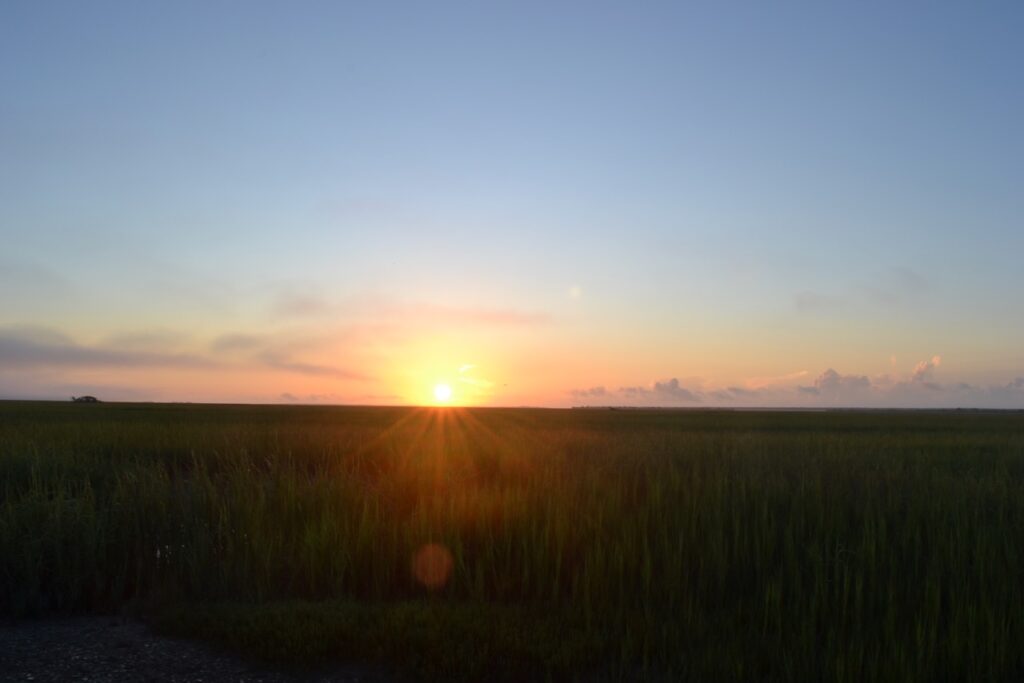
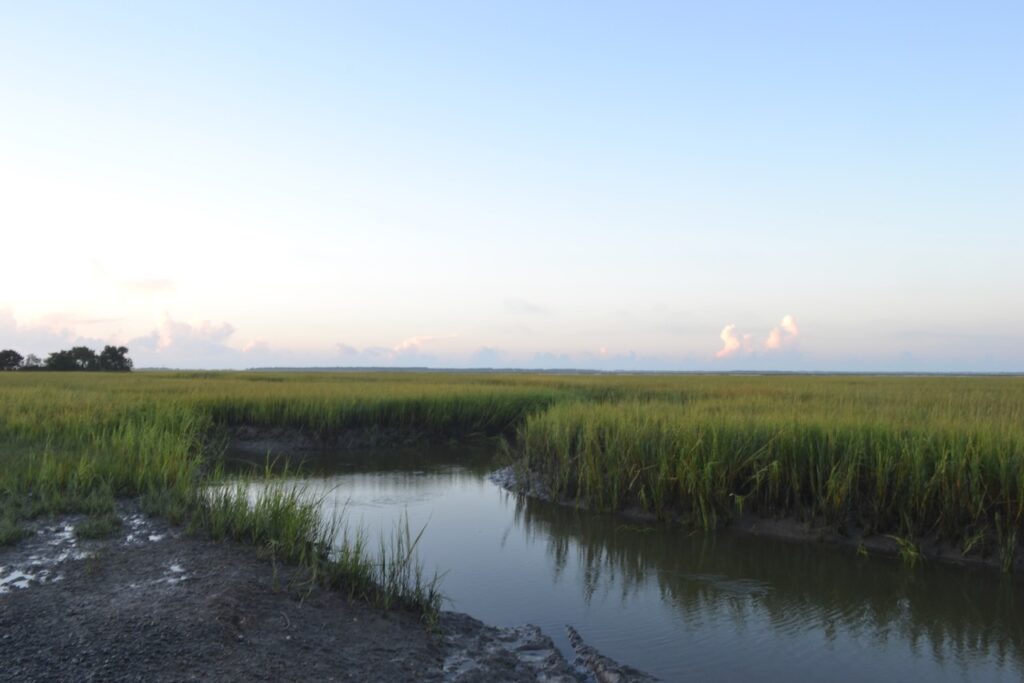
A fine plan, though I was a solo paddler, putting in at a landing new to me. My navigation aid was an ICW chart, providing little detail on the first part of the passage. I launched just after sunrise, 2.5 hours before low tide, and touching bottom with the paddle made me realize I did not know if the creek would be passable. So I pushed on past a hammock (island in the marsh), and made the turn to the north to follow the creek. Almost ten minutes later, I concluded that I was following a creek to nowhere, and backtracked to the hammock and headed to the south near Copahee Sound, a shallow body of water exposing acres of oyster beds. I thankfully was clearly in the correct passage and a widening creek; great and snowy egrets were a white contrast to the green monoculture of marsh grass.
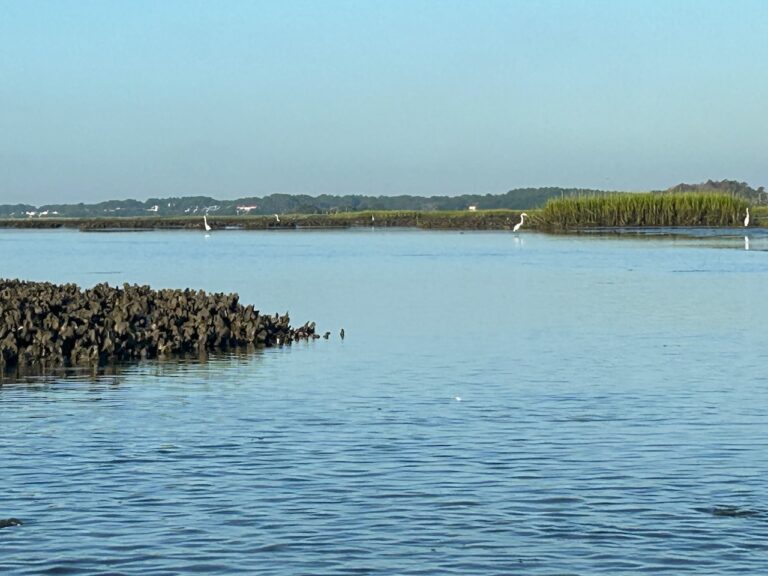
No wind had arisen, and I began to feel the predicted heat of the day. I had not encountered boat traffic yet as I approached the ICW. A landmark appeared over the marsh to the south, and it was not until I crossed the ICW that I identified the object as a water tower on Dewees Island. The wide open waterway, Toomer Creek, presented a view now to the inlet, and the stirrings of a light wind. A waterway to the north, Capers Creek, the Santee Pass beyond, and another creek to the south, recalled a long sail on the Inland Passage in 2007 from the North Santee to Charleston Harbor.
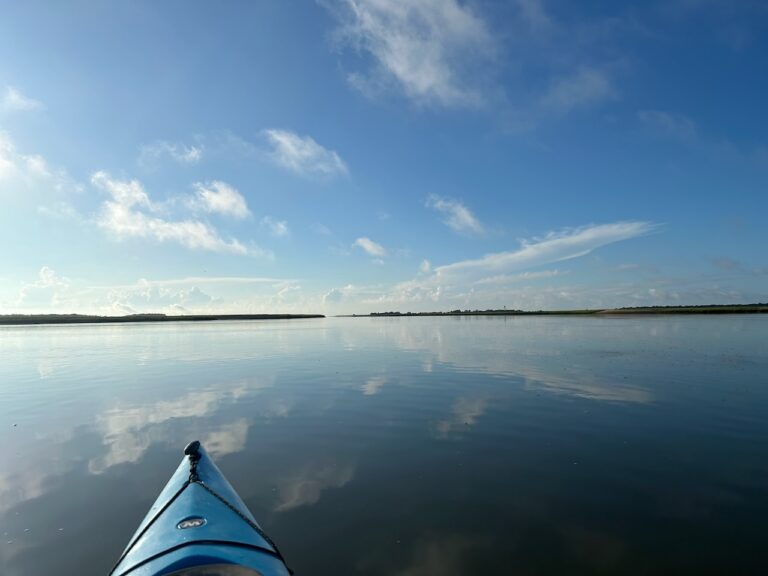
Several outboards rode at anchor, fishing in the inlet, as I paddled between the islands, passing dolphins swimming near Capers Island. I decided to land first at Dewees Island for that perspective, just past a creek disgorging brown waters from the marsh. Along the strand, a large sheepshead swam in the shallow waters. After taking in the view and turning around, I heard a large splash by the nearest fishing boat, and saw the angler’s pole bent double. A large fish it was, making a second jump and huge splash. The third splash was much further from the boat, and ended the battle with the angler, the fish winning. When I paddled over to Capers and briefly talked to the fisherman, he identified the fish as a tarpon.
I took time on Capers Island to refuel, cool down with a swim, and look around. I walked up to the edge of the dunes and the beginning of marsh. A creek separated the marsh from the inlet beach, and a possible path into the island’s interior. I had no plans for a hike on the island, and that idea was reinforced when a swarm of mosquitoes attacked me before I beat a retreat to the beach.
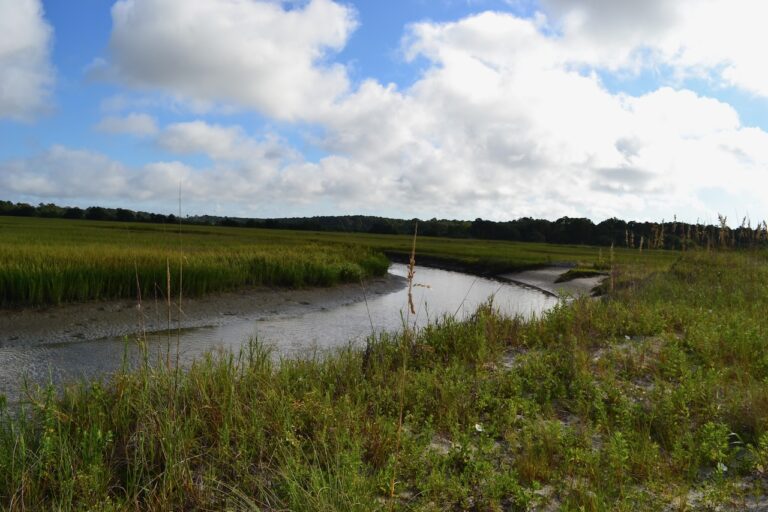
But here, on the southern end of Capers Island, was the beginning of a fifty-mile stretch of undeveloped coast, all protected lands. A wild coast, stretching up to North Inlet. Despite the obtrusive power poles between the islands carrying electrical power to Bull Island, this was a wild inlet, without rock jetties or channel dredging, and Capers the first of wild barrier islands stretching to the north.
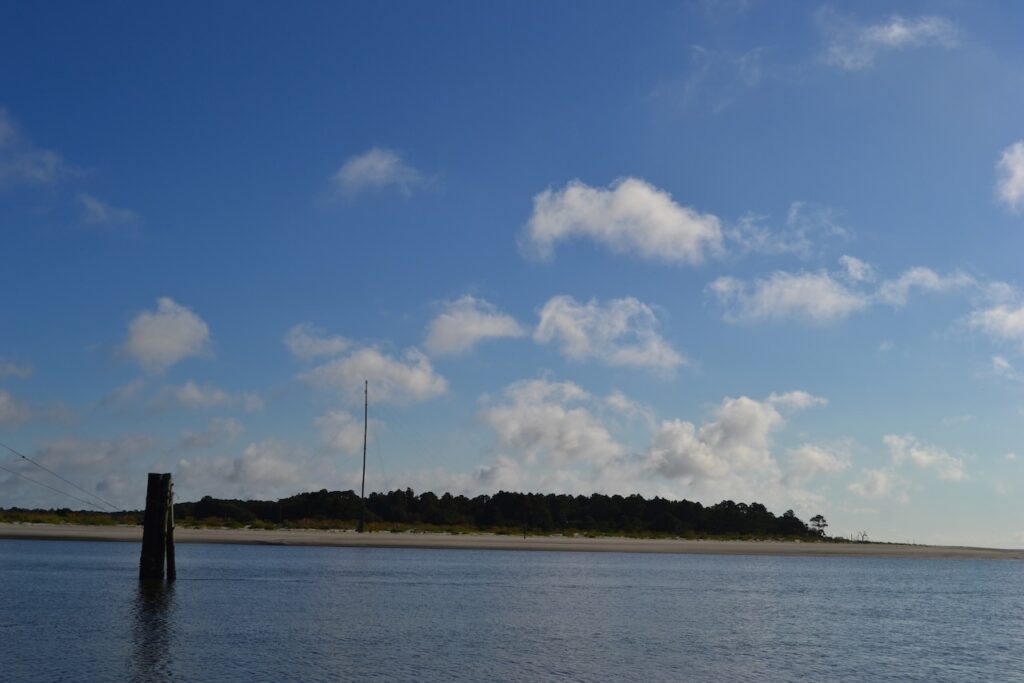
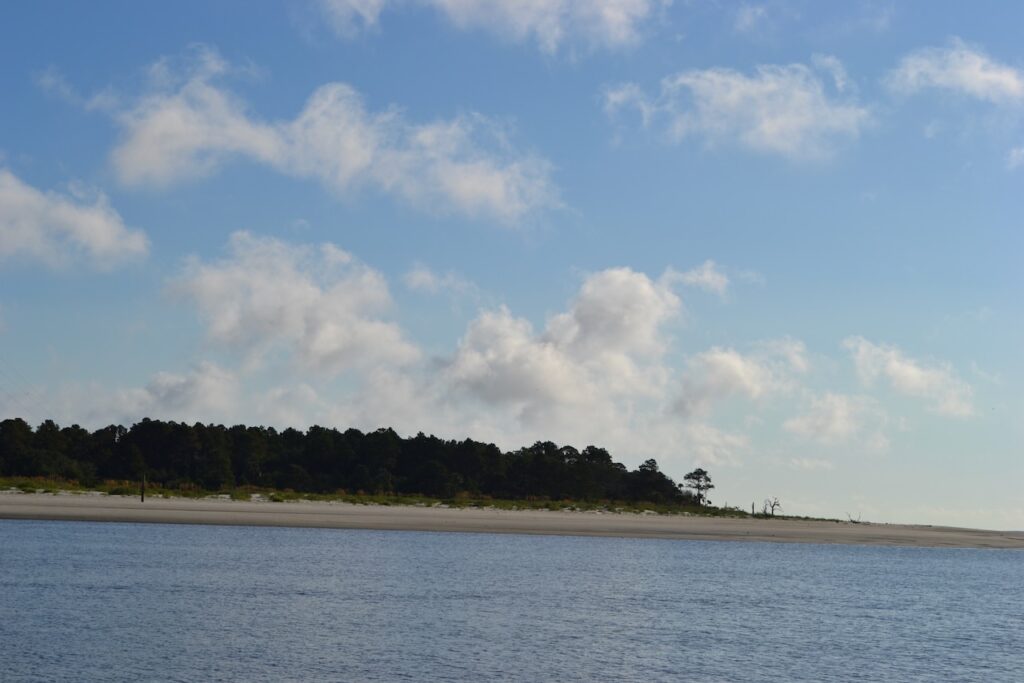
Several boats had come and anchored along this inlet beach, and were leaving as I did. Many more boats would follow this coming Labor Day weekend, and perhaps turn this section of inlet beach into a different form of wild. I got a glimpse of that scene on my 2007 Inland Passage sail, a veritable party flotilla with the beat of rock music pounding in the distance.
The offshore wind was light enough to not bother my progress on the return trip. I was in no hurry, and would give the flooding tide time to fill the creeks near the landing. It was a slow steady meditative paddle, finally leaving other boats as I headed toward the mainland.
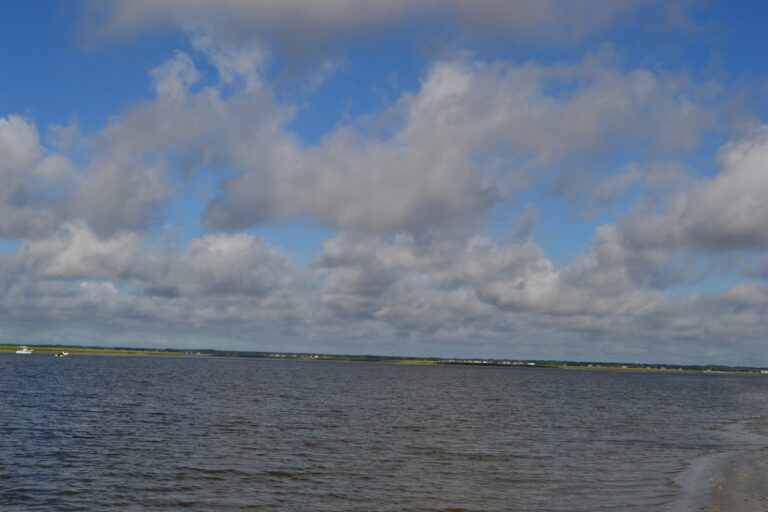
Without the need to think about paddling or navigating in this straight wide creek, I was able to fully observe the bird life. In the far distance a flock of white birds, surely ibis, flew along the forested upland. An anhinga, and then an osprey, passed overhead. A bird of prey in the distance made a rapid forty-five degree dive, disappearing below the marsh grasses. The gleaming white tail and head of a bald eagle soared aloft, turning my gaze further up to the bounty of fair weather cumulus clouds. Terns used the creek contours in their flights, and in my turn to the south an outward bound dolphin passed within feet, its navigation abilities impressive and unfathomable.
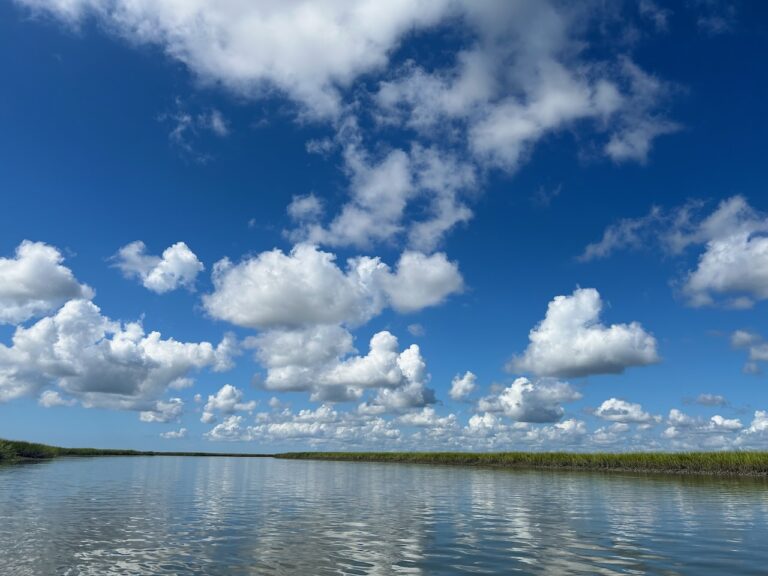
I anticipated an easy retrace of my passage back to the landing, but that was not to be. I tried out two waterways but found them to be creeks to nowhere. I had navigation issues coming and going; I backtracked to the south near Copahee Sound. I searched for the landmark of the hammock sticking up from the marsh, but my low profile in the kayak did not allow a sighting. So I tried along the edge of Copahee Sound, and found a waterway looking promising. I was relieved to see the hammock poking up, and the creek brought me there. I was relieved but saddened by the destruction and misuse of this prominent shell midden – a tall deteriorating tarp shelter at the hammock’s apex, large bags of garbage, and several dilapidated chairs closer to the water. The hammock’s elevation of piled oysters was surely a function of its proximity to Copahee Sound and its prodigious oyster beds.
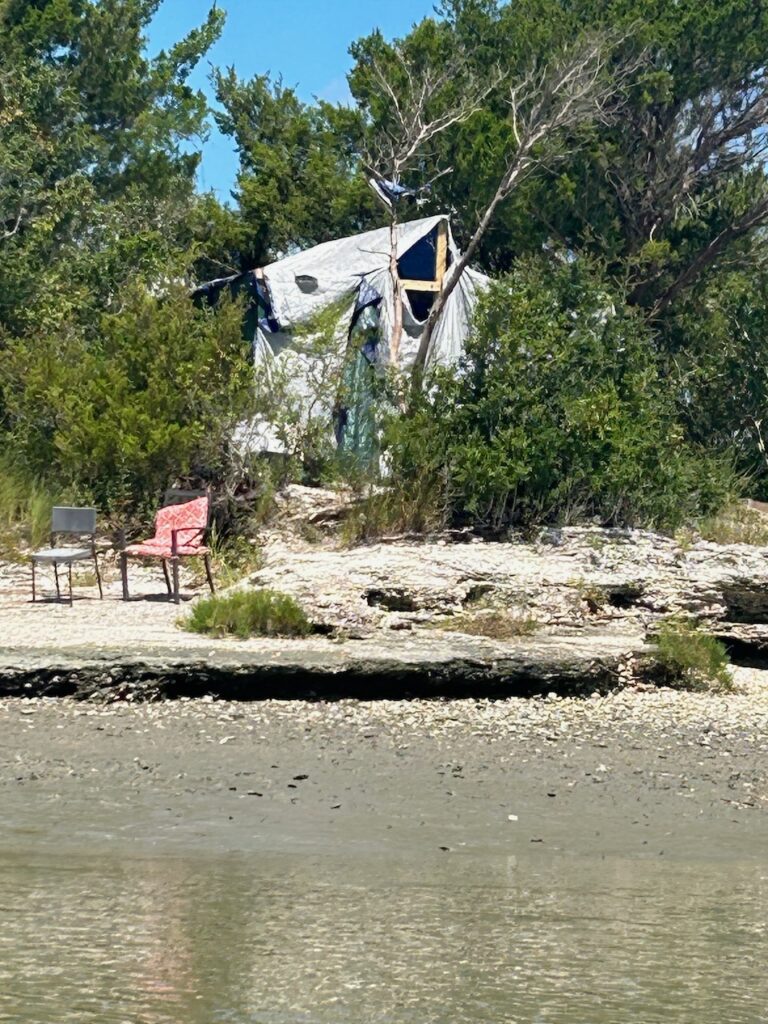
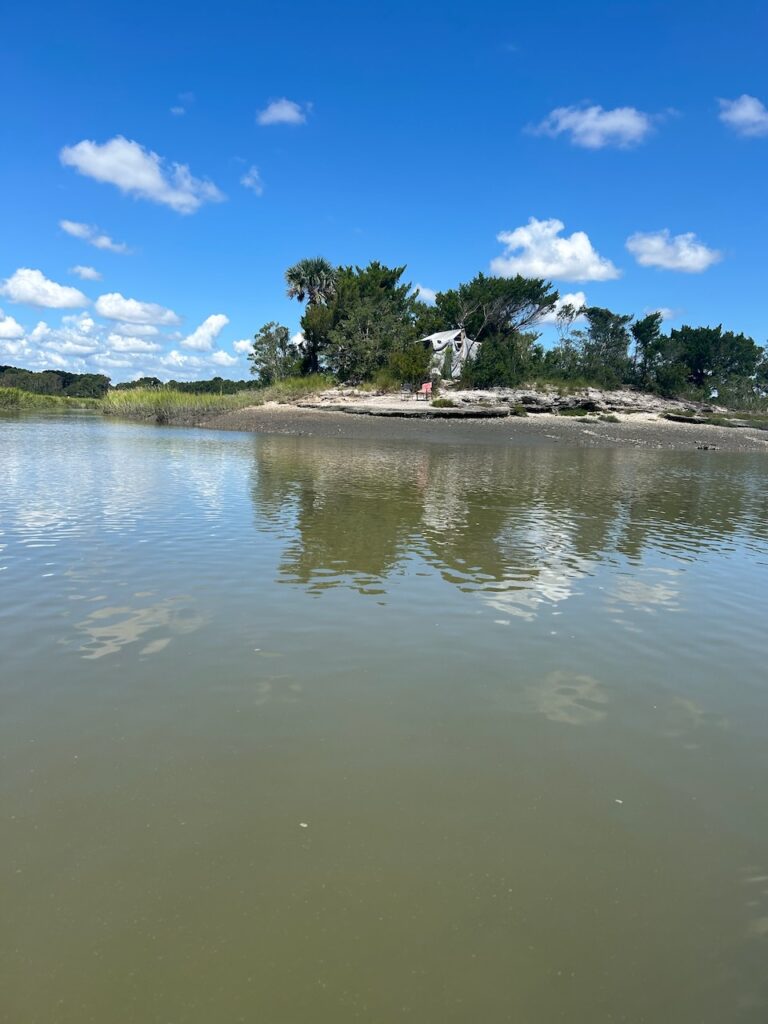
My landing was not steeped in glory, for I grounded within twenty feet of the takeout. Not caring to step out into the mud and water yet, I abused my paddle in prying my way to a little more water to float the kayak. Small humblings on a superb trip.
Great work, Bob. Loved the pictures
There was some work involved, but good work.
I always enjoy these posts. I took the boat up to Georgetown on Friday and stopped at Flatfish to enjoy to unfiltered sounds of nature without the humming of an outboard. It was so serene to watch the gulls pluck fish from the low tides and hear the whooshing of shark tails as they tried to find their next meal. We continued on up and slowed around the Santee Delta to find a number of large alligators in the inlets back to the impoundments. I was shocked to see so much wildlife there, and even more surprised at the number of gators between the Delta and Cat Island (counted over thirty).
As always, thanks for sharing your adventures. Hope you and the family are well. Please give everyone my best!
Heh Brandon thanks for your comment, descriptions of the trip up to Georgetown, and the “thumbs up”. I have seen those gators traveling across the ICW there too.
Thanks for taking us along on your adventures!
You bet, another coming soon
Nice kayak adventure, Bob!
It was, wish you were on that trip
Thanks, Bob, for taking the time to share your exploration. Sincerely, it was a delight to read. You will get me out into those waters yet!!
Scott
Get out there while you can
We have avoided Gadsenville boat landing, as it is not well-kept and seriously dependent on the tides. It is also easy to get lost as everything looks the same. So we prefer Paradise Boat Landing – even though it’s not quite as wild. From an ex-Bay Shore sailor.
I was a bit lost (coming and going) but was found. The destination of Capers Inlet was definitely worth it. I was seeking the wild.
Beautiful pictures, Bob. I have always loved egrets. They are so stately & I just feel happier & calmer when I see them. Thank you for sharing this peaceful journey with us (minus the trash that was left – I just don’t understand people who litter – my parents taught me to pick up after myself and anyone with an Internet can look up Leave No Trace ethics). Nature needs our help. Can’t wait for your next adventure!
Thanks, Darlene. I’m afraid my float photos did not do the egrets justice, but they were everywhere on my trip. And that next adventure has a plan about 10 days off to somewhere I have never been; lots to anticipate.
I’m a confirmed landlubber, but always like seeing other perspectives and appreciate you sharing your adventures.